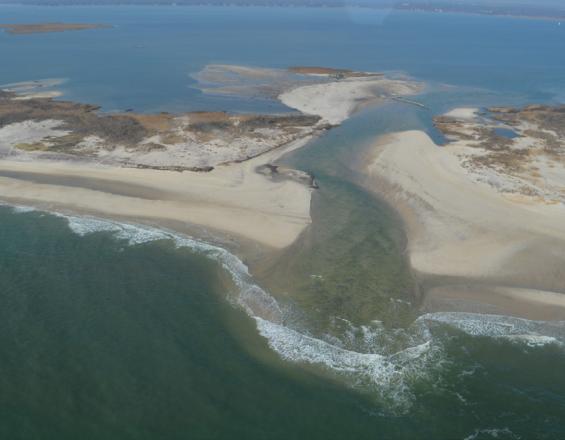
Proceso de las islas de barrera natural y seguimiento de la ruptura de la reserva natural en Fire Island National Seashore

Fire Island es una isla barrera y proporciona cierta protección contra el riesgo de tormentas a las comunidades continentales de Long Island. Fire Island National Seashore abarca la mayor parte de Fire Island y cuenta con diversas zonas de gestión. En 2012, el huracán Sandy abrió una brecha en la zona silvestre de Fire Island, que desde entonces ha permanecido abierta y ha sido objeto de estudio. Esta oportunidad para que los procesos naturales se desarrollen sin obstáculos permite a los biólogos realizar un seguimiento exhaustivo de la brecha, lo que ofrece la oportunidad de informar sobre futuras decisiones de gestión de la brecha en Fire Island y en otros lugares.
Impactos
La rotura de las islas barrera y el lavado excesivo son procesos naturales que forman parte integrante de la sostenibilidad a largo plazo de los sistemas de islas barrera costeras. Las brechas pueden aumentar la anchura de una isla y contribuir al desarrollo de diversos hábitats, como marismas y llanuras intermareales. Las brechas, como la de Fire Island, permiten la mezcla de aguas oceánicas y estuarinas, modificando a menudo las condiciones bióticas y abióticas, lo que puede aportar beneficios ecológicos, incluida la mejora localizada de la calidad del agua. Debido a la designación federal de zona salvaje, se permitió que la brecha permaneciera abierta y se estudió para determinar si suponía una amenaza para la vida, la propiedad o los recursos del parque, tal y como se describe en la designación de zona salvaje de Fire Island. Actualmente, el Servicio de Parques Nacionales está completando una Declaración de Impacto Ambiental que proporcionará orientación a los gestores sobre la mejor manera de gestionar la brecha de la zona salvaje en el futuro. La posibilidad de que los procesos naturales se desarrollen sin impedimentos permite a los biólogos del Servicio de Parques Nacionales, a los científicos del USGS y a los del mundo académico realizar un seguimiento exhaustivo de la brecha, lo que ofrece una oportunidad extraordinaria para fundamentar futuras decisiones de gestión de la brecha en Fire Island, en la región del Atlántico medio y en otros lugares.
